Marbella and Ibiza Blog Amàre Beach Hotels
- Amàre Hotels
- Blog
- Tourism
- Travelling to Ibiza: everything you need to know
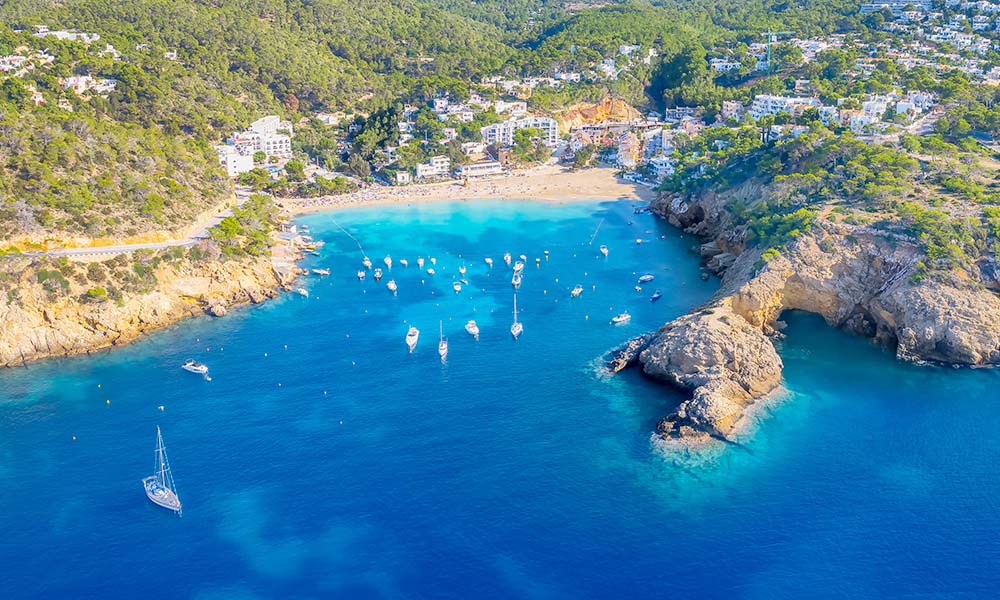
24 Apr
2024
Travelling to Ibiza: everything you need to know
Before travelling to Ibiza, jot down the practical information in our quick guide to find out how to get to the White Island, how to travel around, what the weather is like, what to pack in your suitcase and what Ibiza is like. You will all be amazed to discover that the predominant colour is green and that there are parties, yes, but there is also much more than just partying: nature, gastronomy, culture, routes, sunsets…and even silence! #
If you want to know what you need to travel to Ibiza (Eivissa, in Catalan), don’t miss our practical guide, which includes information on transport, accommodation, documentation and much more. Because there are travellers who prefer to improvise and let themselves go, and others who want to sort out the more practical aspects of a trip in advance.
Where Ibiza is located
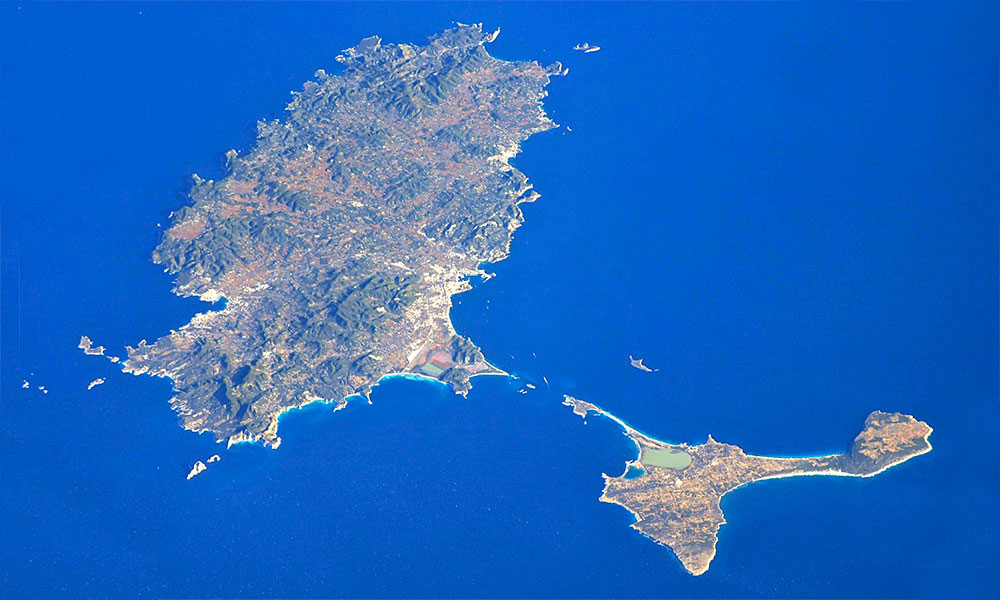
For those of you visiting us from abroad, you should know that Ibiza is a Spanish island that forms part of the Balearic Islands archipelago and is located on the western side of the Mediterranean Sea, almost 80 km from Denia (the nearest port on the Iberian Peninsula); 80 km southeast of the island of Majorca and 7 km from Formentera. Due to its location, the island has a typically Mediterranean climate, with hot, dry summers and mild winters, with moderate minimum temperatures.
The island’s capital has the same name, Ibiza/Eivissa, although Ibicencans usually refer to it as Vila. In addition to this municipality, the island is made up of four others: Santa Eulària des Riu, Sant Joan de Labritja, Sant Antoni de Portmany and Sant Josep de sa Talaia.
What is Ibiza like?
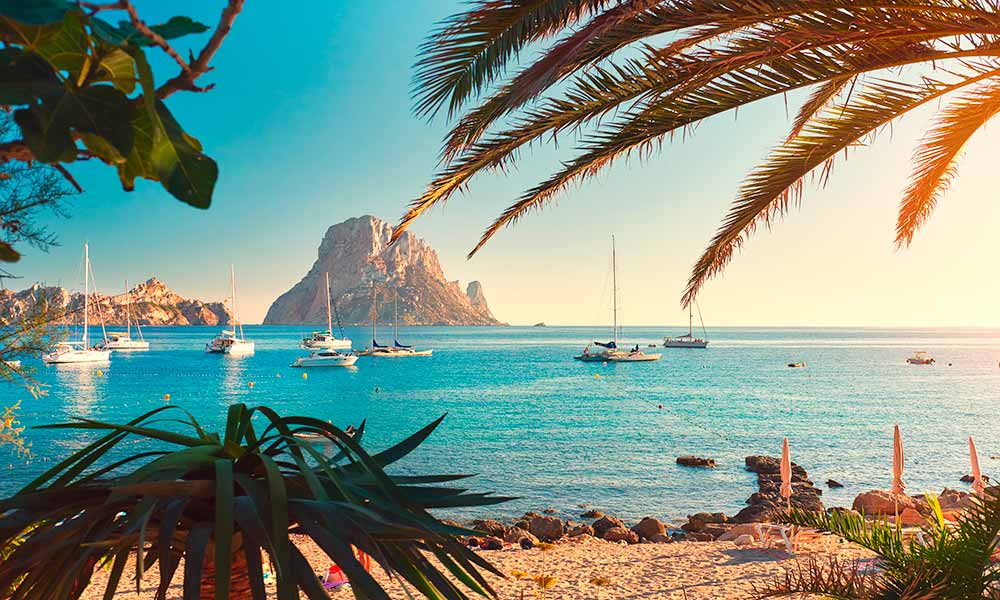
Ibiza is an island characterised by a mountainous landscape that alternates valleys with low mountain ranges covered with pine forests, the highest peak being Sa Talaia, at a height of 475 metres. Its rugged landscape also extends to the coastline, resulting in a multitude of beautiful coves scattered along its long stretches of cliffs, giving rise to a few beaches longer than 500 metres.
Travelling around the island from cove to cove is one of the must-do activities in Ibiza thanks to the charm of its roads, which wind through beautiful rural landscapes. With an area of 572 km2, it is very tempting to move from north to south and east to west in a single day, as the maximum distance on the island does not exceed 55 km.
What are the villages of Ibiza like?
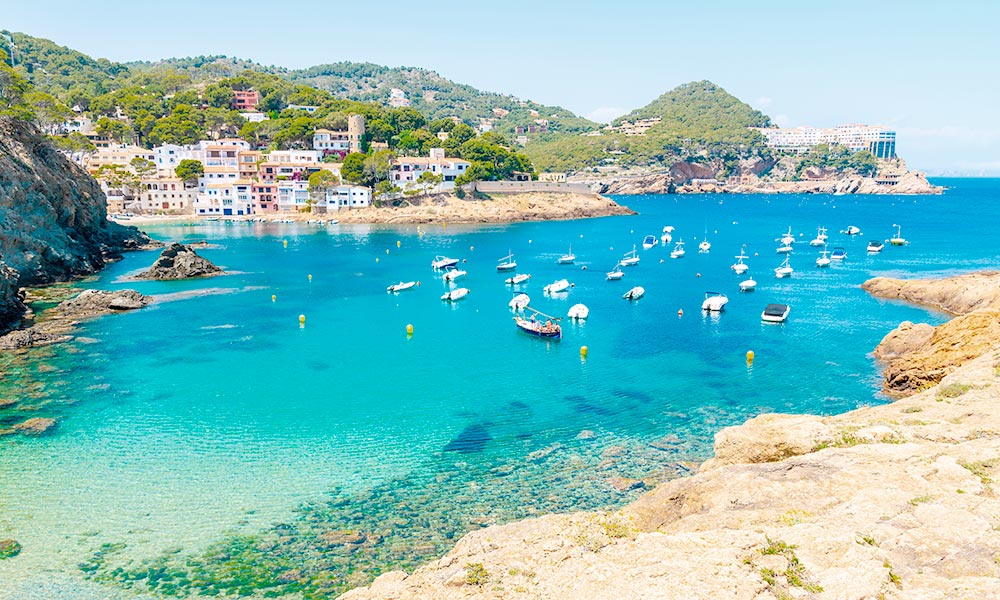
Except for the villages of San Antonio and Santa Eulalia, which are the most touristy, the rest of Ibiza’s villages and parishes are small urban centres located in the island’s interior. The parishes of Santa Agnès, Sant Mateu, Sant Joan, Sant Llorenç, Sant Agustí and Es Cubellsremain as they were in the past, with only a church and a few houses around it.
The rest of the towns have expanded in recent decades, although they are still small villages, such as Sant Carles, Santa Gertrudis, Sant Jordi, Sant Josep, Sant Miquel and Sant Rafel. Jesús and Puig d’en Valls, neighbours of the city of Ibiza, have undergone greater growth due to their proximity to the island’s capital.
The towns and villages of Ibiza that you cannot miss
What do you need to travel to Ibiza?
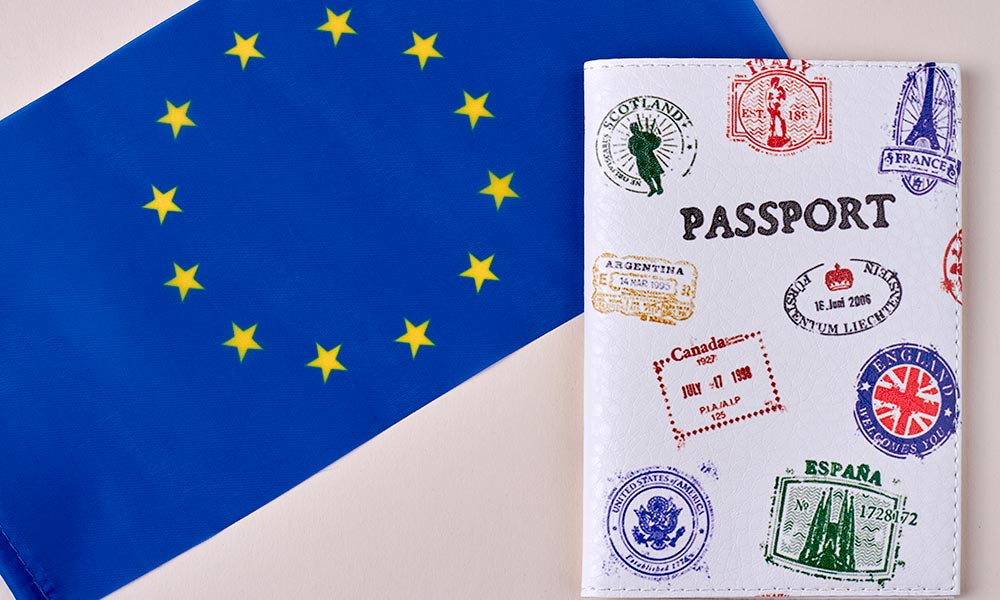
If you are visiting us from outside Spain, you will certainly find this information very useful.
Documentation for travelling to Ibiza
If you are an EU citizen, you will only need to travel with a valid National Identity Card or passport. If you are a British national, then you will need to show your passport. If you are a citizen of the following countries, you do not need a visa and can travel with your passport only, as long as your stay is shorter than three months: Andorra, Argentina, Australia, Brazil, Brunei, Canada, Chile, Colombia, Costa Rica, Croatia, Colombia, El Salvador, Guatemala, Honduras, Hong Kong, Israel, Japan, Macao, Malaysia, Mexico, Monaco, New Zealand, Nicaragua, Panama, Peru, Paraguay, Republic of Korea, San Marino, Vatican City, Switzerland, Singapore, United States, Uruguay and Venezuela. For all other countries, a visa is required.
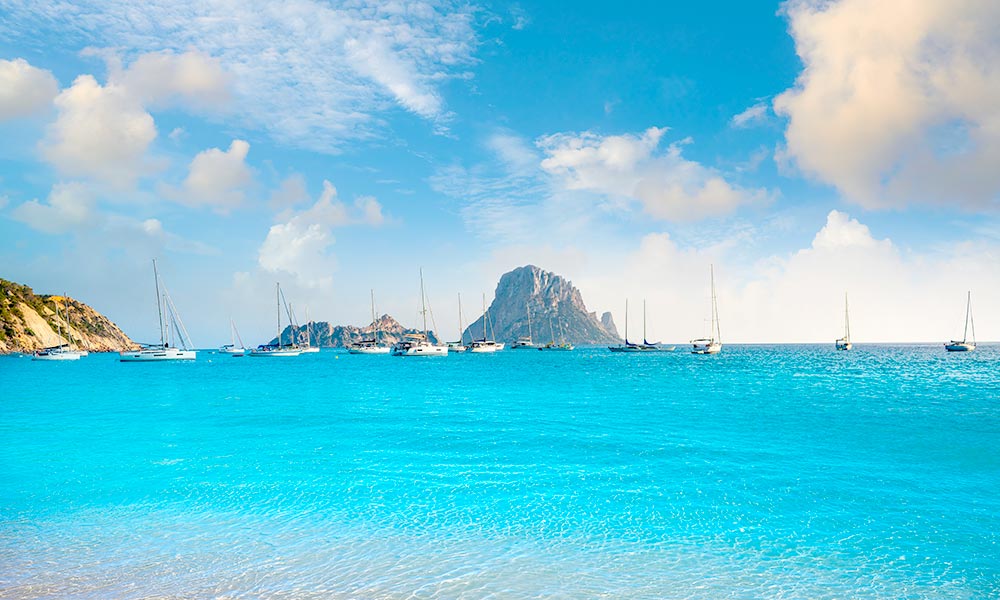
The weather in Ibiza
Ibiza’s climate is typically Mediterranean, with mild, sunny winters and warm summers. The rainiest months are between October and April, with a monthly average of 4 to 5 days of rainfall.
Average temperatures by season:
Spring: 26ºC max. (June) and 11ºC min. (April)
Summer: 30ºC max. (August) and 19ºC min. (September)
Autumn: 23.5º C max. (October) and 9ºC min. (December)
Winter: 17º max. (March) and 7ºC min. (January)
Packing: what to take to Ibiza
If you’re travelling to Ibiza in summer, the answer is very simple: light clothing, swimwear, flip-flops, a hat or cap, sunglasses and a jacket for those nights when you’re dining by the sea or a cool breeze is blowing. If you’re travelling in spring or autumn, you’ll need to add some extra warm clothing and closed-toe shoes in case of rainfall during your holiday. If you like walking, don’t forget to pack trainers. And if you’re heading to Ibiza in winter, pack winter clothes suitable for warm mornings and cold nights.

Money in Ibiza: currency, cards and ATMs
The currency on Ibiza is the euro, as in the rest of Spain. You can withdraw cash in all localities except in the smallest parishes (Es Cubells, Santa Agnès, Sant Mateu and Sant Agustí). Card payment is widely available, although you will still find establishments where only cash is accepted, so we recommend that you ask about the payment methods available when making bookings.
Health and safety in Ibiza

The island has the public hospital Can Misses and the health centres of Es Viver, Sant Antoni, Sant Jordi, Sant Josep, Santa Eulalia and Vila, as well as two major private medical centres: Policlínica Nuestra Señora del Rosario and Clínica Vila Parc. If during your holidays in Ibiza you have an emergency, you should call the following numbers:
- Emergency care: 112
- Urgent care: 061
- Fire services: 080
- Police: 092
In general, the precautions to remember are the same as in summer in other Mediterranean destinations: don’t play sport in the middle of the day, apply sunscreen regularly when exposed to the sun, keep your head covered to avoid sunstroke and, if you are going on excursions, take water to avoid dehydration and make sure you have the level of experience required for the chosen route or activity.
How to get to Ibiza
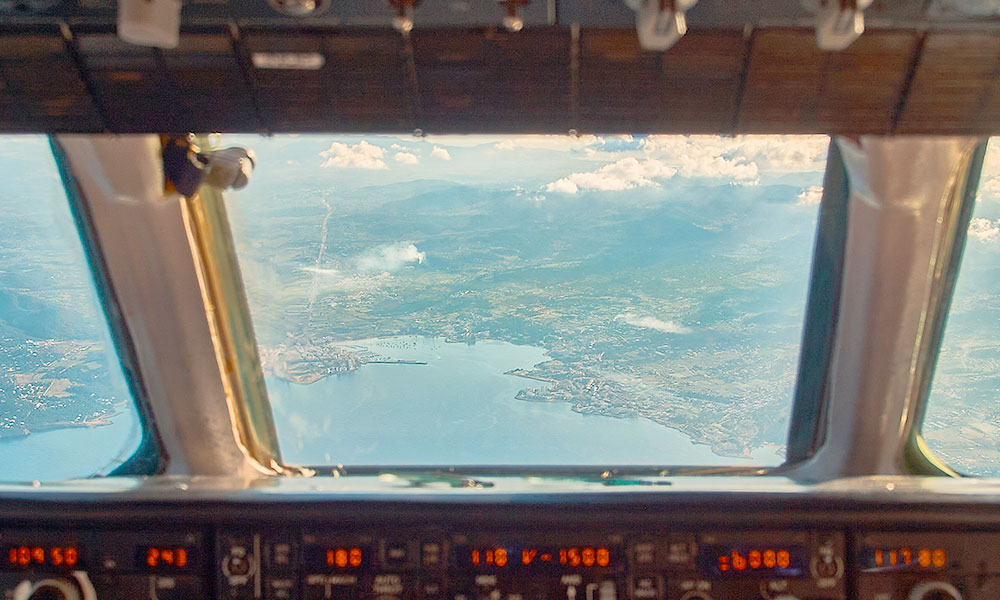
You can reach the island by plane, ferry or yacht charter.
- Travelling to Ibiza by plane: the island is connected to the main Spanish airports and, during summer, to many European cities. Ibiza airport is located in the south, just over 7 km from the city centre, 20 km from Sant Antoni, 22 km from Santa Eulària and 35 km from Portinatx, among other connections.
- Travelling to Ibiza by ferry: theisland has maritime connections with the ports of La Savina (Formentera), Valencia, Denia (Alicante), Palma de Mallorca, Maó (Menorca) and Barcelona. The shipping companies operating these routes are Baleària, Trasmed and GNV. This option is the only one possible when you want to travel to Ibiza by car.
- Travelling to Ibiza by yacht charter: If you want to discover Ibiza by boat, Ibiza has marinas in Sant Antoni, Santa Eulària and the capital. You can also anchor in numerous coves, as long as you do not drop anchor in posidonia oceanica (Mediterranean tapeweed seagrass) meadows.
How to get around Ibiza?
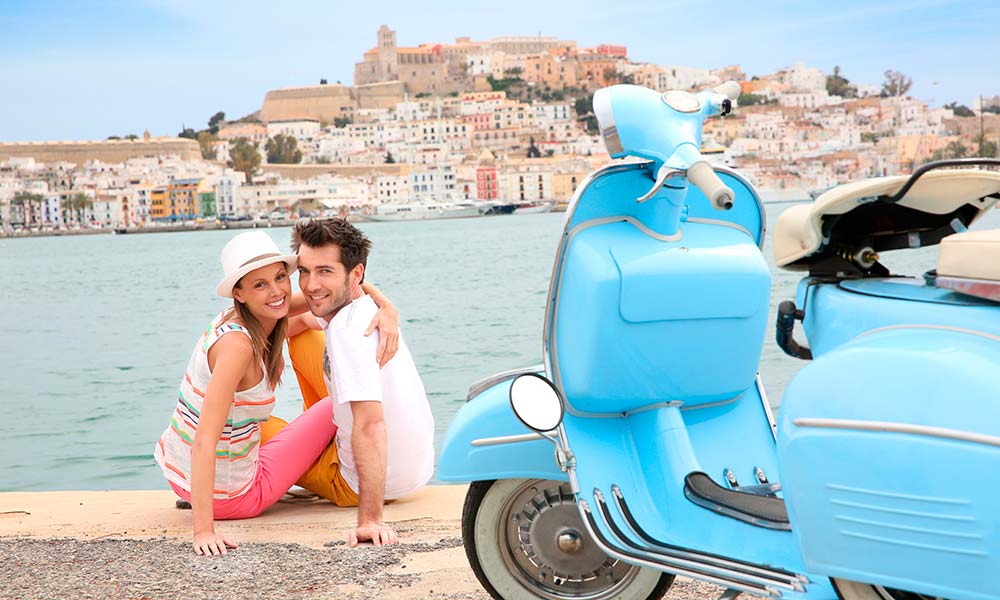
Hire car or motorbike: Ibiza is perfect for hire cars due to its short distances. The island has two main two-lane roads, linking Sant Antoni with Ibiza and Ibiza with the airport. The rest of the road network is made up of secondary roads with one lane in each direction and, in some cases, minor roads with narrower carriageways whose maximum speed varies between 40-70 km/h depending on the section.
Bus: The island has a network of bus lines that is fully operational during the summer season. You can check timetables and routes on the Ibiza Bus website, as well as the frequency of the lines that connect the airport with Ibiza, Sant Antoni and Santa Eulària.
Taxi: this option is best when you just want to explore the area around your hotel or you prefer not to worry about parking or drink driving. Taxi ranks are located in all tourist centres, as well as radio taxi services.
Boat: during your holidays in Ibiza, you can reach some of its most beautiful coves by boat thanks to the regular routes and maritime trips that leave from the ports of Ibiza, Santa Eulària and Sant Antoni.
Alternative transport and sustainable mobility

If you want to get around Ibiza by electric vehicle, you’ll find these types of cars and scooters available from car rental companies. The network of chargers is expanding every year, which added to the short travelling distances on the island will allow you to get around without fear of running out of power. In addition, at Amre Hotel Ibiza you’ll have electric chargers so that your vehicle can recharge while you rest.
Another option to explore the island is by following its hiking and cycling routes. On the websites ibiza.travel, visit.santantoni.net, santjosep.net, visitsantaeulalia.com and turismosantjoan.es you can find detailed information about the different established and signposted routes available. And if you need to rent bicycles, on the island there are several specialist companies that also have electric models.
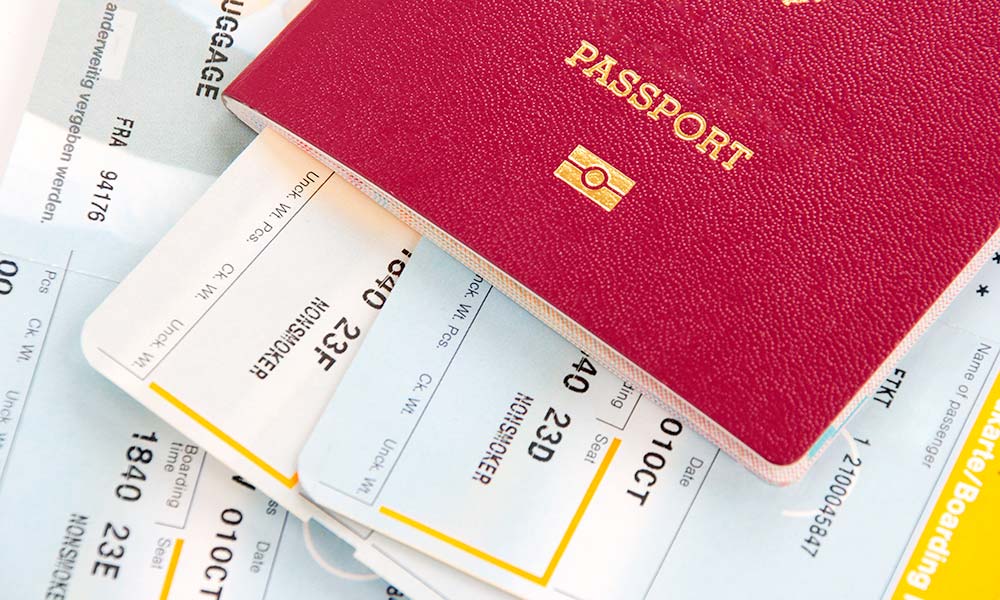
Travelling to Ibiza: tips and advice
- Book your airline tickets as soon as you know your travel dates to avoid high fares and secure your seat.
- If you’re driving around Ibiza, get off the main roads whenever you can and take the alternative routes to enjoy the island’s beautiful scenery.
- For longer stays, consider the convenience of travelling to Ibiza by ferry with your car. The shortest route departs from Denia (the closest port to the island) and takes 3h 30m.
- Book your stay in advance. Ibiza has a wide range of accommodation on offer, including 2, 3, 4 and 5-star hotels, villas, tourist cottages, campsites and holiday flats.
- Travel in mid and low season to find more affordable prices, greater availability in the type of accommodation you want and a more welcoming climate for sports and non-water activities, such as hiking and cycling. If you prefer gastronomic trips, you should travel to Ibiza in the months of April, May, October and November, when there are not so many visitors and there are usually several gastronomic days, such as the Ibiza Sabors or the Fira des Calamar events, for example.
Where to stay in Ibiza: Hotels, resorts and villas

Ibiza is the perfect size for you to get about at the pace you want without missing anything, but at the same time it has a wide range of accommodation for all tastes and budgets. That is, it has the best of small and large destinations. For example, on its area of 572 km2 you’ll find more than 550 establishments from which to choose the type of stay you like: hotels of all categories (with a wide offer of 4-star and 5-star hotels), boutique hotels, agritourism accommodation, cottages, tourist apartments, boarding houses, holiday clubs and campsites, not forgetting a wide range of villas and holiday homes.
Which area is best to book a hotel in Ibiza?
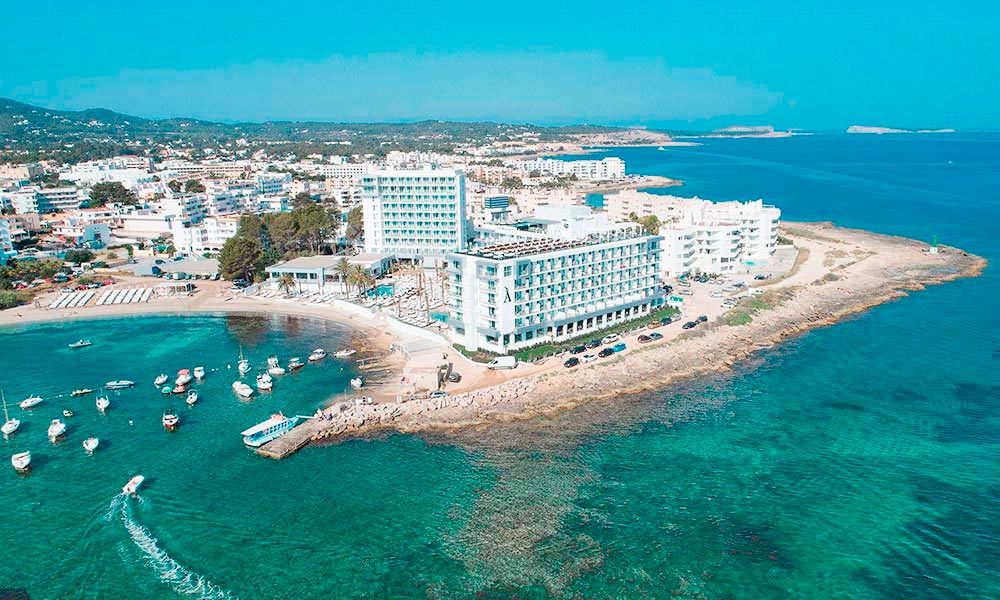
If this is the first time you are travelling to Ibiza, you often don’t know if it’s better to choose a hotel in the bay of San Antonio in the north of the island, in the area of Santa Eularia in the capital, each area has its own personality and it’s useful to know what defines them so you know where it’s best to book a hotel to suit your plans in Ibiza.
- Stay in the north of Ibiza if you are looking for a quiet family destination and do not want to move around the island much. This area is the most remote on Ibiza and has two small tourist hubs (Portinatx and Port Sant Miquel), around which there are mainly luxury hotels, family friendly resorts and agritourism accommodation.
- The south of Ibiza covers Playa d’en Bossa and Cala d’Hort. You will like it if you have a clubber soul and your main area of activity will vary between the city, the most famous clubs in Ibiza and the beaches of Ses Salines and Cala Jondal. In this area there are plenty of villas, holiday homes and 3-star and 4-star hotels in Playa d’en Bossa.
- Book a hotel in the east of Ibiza if you are looking for a family atmosphere – including camp sites – as this area has traditionally attracted parents from Germany and the UK. With a growing range of hotels recommended for adults, the area that comprises the entire town of Santa Eulària is also suitable for a relaxing holiday as a couple.
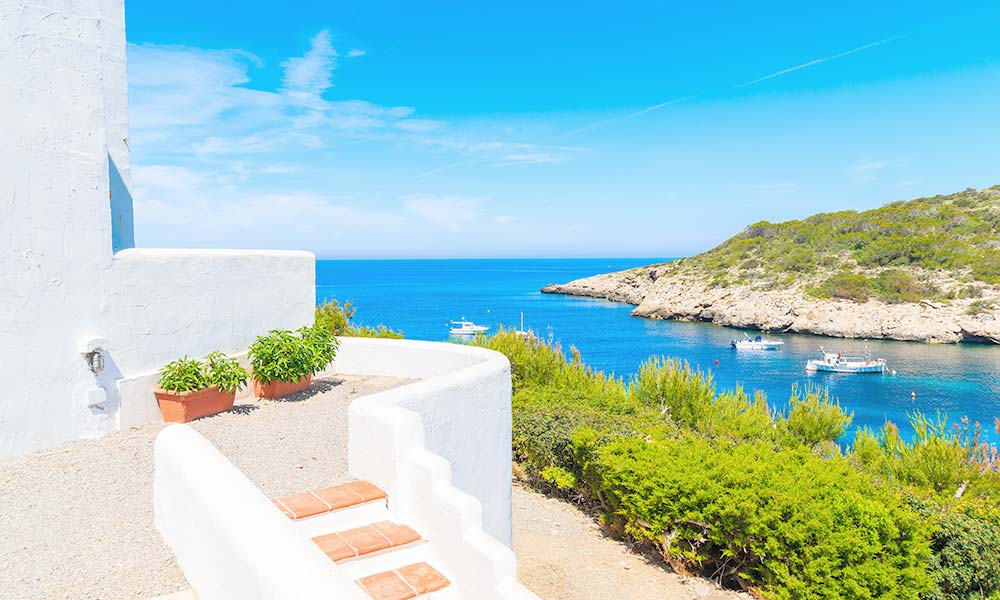
- The capital of Ibiza is the most suitable option if you want to travel around but do not want to rent a car, since most of the regular lines depart to the beaches and the most important towns from its bus station. It is also a recommended choice for those who like nightlife, who’ll find the clubs Pacha Ibiza, Amnesia, Hï Ibiza Muro and Club Chinois nearby or within a few kilometres.
- Sant Antoni and the West is the gateway to the famous sunsets of the island, to several of the most beautiful and photographed beaches of Ibiza and to the charming villages located inland. There is a wide range of accommodation, so you’re sure to find what you’re looking for. The best thing about staying in this part of the island in the towns of Sant Antoni and Sant Josep is that its excellent location allows you to reach the main landmarks on Ibiza quickly.
When is the best time to visit Ibiza?
43 things to see and do in Ibiza
Do you already know when you are visiting Ibiza? Book your adults-only hotel
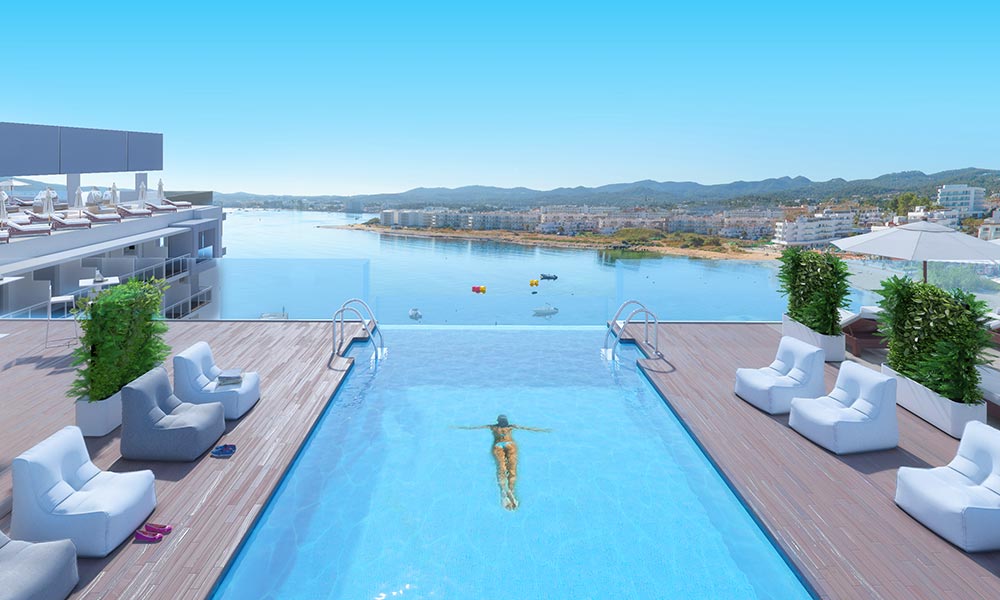
Our four-star hotel recommended for adults is located on the seafront in the municipality of Sant Josep de Sa Talaia. Overlooking the beautiful bay of San Antonio, at Amàre Beach Hotel Ibiza you can enjoy fabulous rooms and suites, two swimming pools, exquisite gastronomy, rooftop terrace with sunset views and spa treatments by Germaine Capuccini. Book today and take a step towards your unforgettable holiday in Ibiza. #WhatAFeeling!







María